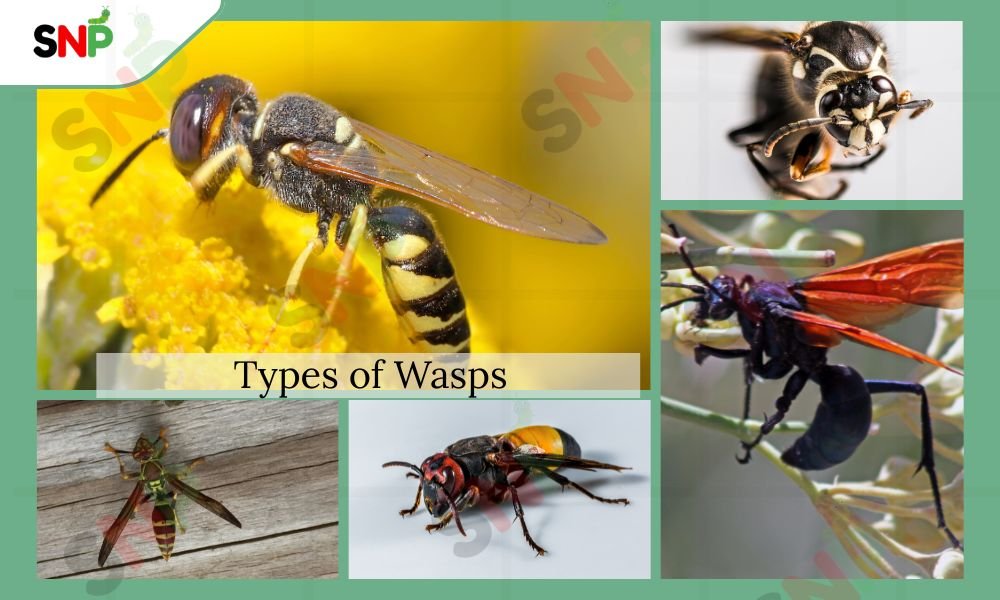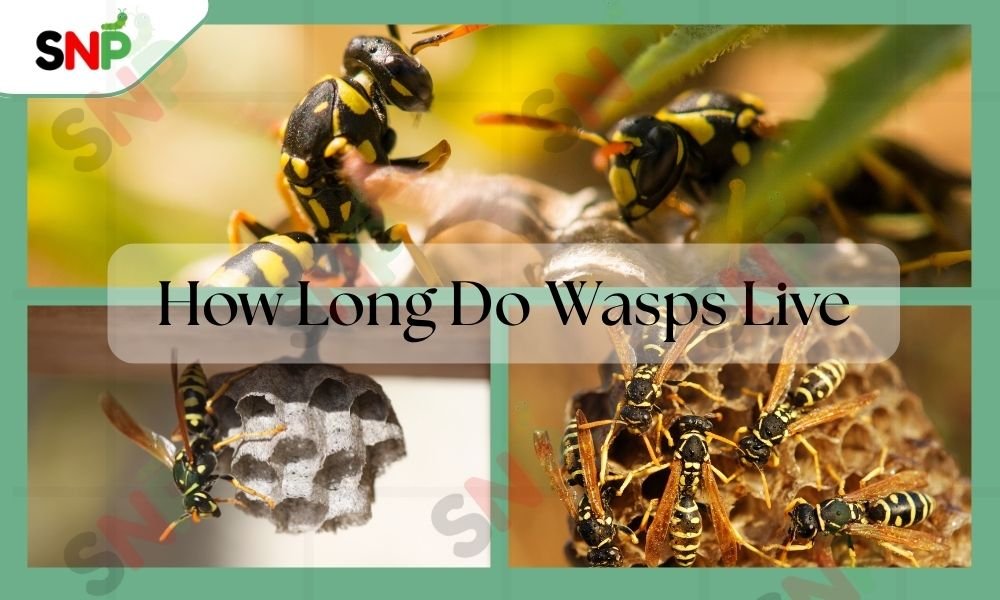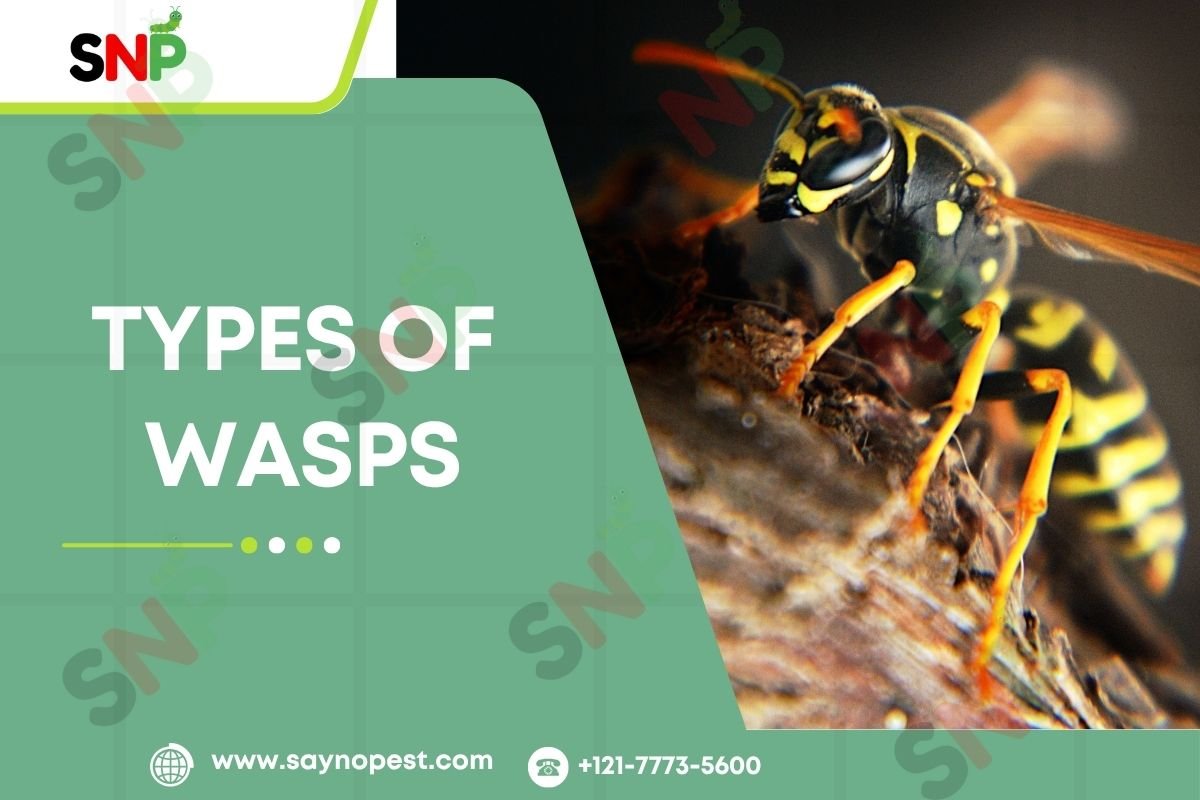Wasps are an actual pest across the country, and hence understanding the familiar types of wasps is key to effective wasp control and safety. Recognizing and being capable of managing and eliminating these insects, whether you’re faced with aggressive yellow jackets or the more docile paper wasps, are crucial for both homeowners and businesses. Here will be our focus on the main types of wasps, how to kill wasps, what are their life cycle, and we will also provide simple tricks for.

Types of Wasps in the United States
There are more than 4,000 species of wasps in the U.S., but a very limited number is found around residential buildings and are potentially dangerous. The most common types of wasps you might come across are:
Yellow Jackets
Yellow Jackets wasp stand out with their black and yellow striped pattern since they display the highest level of aggressiveness. The construction sites of Vespula spp. exist either beneath ground or within wall cavities while their defensive protection against nest intruders has earned them universal notoriety.
Paper Wasps
They’re outstanding for their thin bodies and long legs. The nests of paper wasps take an umbrella shape and usually reside under eaves or attics and tree branches. Paper wasps exhibit color patterns that include black together with yellow and white markings, and also exist in red or orange hues.
Bald-Faced Hornets
Despite the name, they are still wasps. The creatures are black and have white facial markings. They prefer to inhabit tree roots or building eaves and construct large, aerial nests. Bald-faced hornets are seriously mad with their stings if you become an obstacle to their nests.
European Hornets
European hornets are bigger than the usual wasps. They have a mixture of brown and yellow colors and build nests from paper in the hollows of trees or wall voids.
Blue-Winged Wasps
This wasp species mostly found in the eastern parts of the United States. The blue-winged wasps characterized by their large size and wings of a blue hue and are a completely solar species that makes underground nests and stings only if disturbed, seldom.
Therefore, these types of wasps are useful for carrying out pollination and pest control, but they are also harmful in case of build their nests near humans
How to Kill Wasps Safely and Efficiently
If you find a wasp problem at your place, then you must know the ways to how kill wasps to save yourself. Here are some of the effective methods that are used for getting rid of wasps:
Direct Sprays
The commercial wasp sprays we’re speaking of here have a nozzle that jets the spray a long way so that you can keep a safe distance. Shoot the entrance to the nest in the early morning or at night before it gets dark, when the wasps are asleep.
Soap and Water Solution
A solution that is prepare by mixing two spoons of dish soap in a bottle with water and sprayed directly on the nest. The soap prevents the breathing pores from working correctly, and the wasps killed instantly.
Homemade Traps
The first step here would be to cut a plastic bottle and turn it over where the top is filled with sugary syrup or a soda of your choice. After that, we wait for the wasps to get lured into the sweet smell and drown.
Rubbing Alcohol
A small drop of alcohol dropped onto the insect will quickly kill it. It can even be done when the wasp is inside your home and you want to get rid of it quickly.
Essential Oils
Create a natural wasp deterrent using water and dish soap by mixing any available citrus oil with clove oil and peppermint oil. You can apply this solution through the targeted entry points or nests after preparation.
Remember that protective clothing is a must, and do not swat the wasps as this can annoy them and they can become aggressive. At the same time, the use of professional wasp pest control services is highly affected when there are big infestations.

How Long Do Wasps Live?
The understanding of the lifespan of wasps is important to come up with effective wasp control measures. The life expectancy of the average worker as an adult is between 12 and 22 days. A full life cycle-from egg to adult-consists of about 35 and 70 days. The case is different for queen wasps, who survive overwinter by hiding themselves in safe places and thus can survive for one year. Worker wasps and males naturally die in autumn because of the cold and lack of food.
Wasps, unlike honeybees, do not die after stinging. Their slick retractable stinger enables them to sting several times. This is what makes the effective wasp pest control even more important, with the late summer and fall period being the most aggressive season for wasps.
Wasp Pest Control: Prevention and Professional Help
Combining prevention, DIY solutions, and professional help for controlling wasps effectively consists of:
Seal Entry Points
Visually inspect and seal up the cracks, gaps, and holes in the walls, roofs, and around the windows to make sure no wasps can get there.
Remove Food Sources
Regularly keep outdoor eating areas clean, cover trash cans, and remove the fallen fruit from the yards to be less of a wasp attraction.
Decoy Nests
Put up some artificial nests to discourage the territorial wasps from creating the real ones around your place.
Professional Removal
If you cannot access a nest, or it is a big one, look for a licensed wasp pest control service to do the job. These people have the professions and equipment to take down nests in a safe and efficient manner.
Doing regular checks and acting promptly are the main principles of successful wasp control.
Conclusion
Wasp management requires full knowledge about types of wasps, along with their natural behaviors as well as appropriate wasp control techniques. Learning either home-based safe DIY wasp killing methods or hiring professional pest control services for wasps requires updated knowledge to protect families and properties. Our security depends on fast intervention whenever wasps create a dangerous situation, even though staying with low numbers of wasps can sometimes bring advantages. The preventative practice of wasp pest control should become a fundamental part of your regular home care activities to maintain lasting mental tranquility.

Leave a Reply